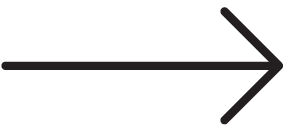Popular social media scheduling tools like Hootsuite, Buffer and Sprout Social can be a true lifesaver when it comes down to bettering your brand’s digital presence. They help keep you on track, they promote consistent posting and they are easily tailored to best suit your needs on each platform.
One feature that each of these scheduling platforms have in common though is the option to cross-post. That would mean that you write one single caption, choose the same photo, tag the same people (despite different handles across different platforms), select the platforms you want it to go out on (say your brand is on Facebook, Instagram and Twitter), and schedule it to go out on those selected platforms all at the same time. Boom. Done. You’ve posted for the day on all of your social platforms and you can call it a day now, right? Not so fast.
Let’s dig deeper into the dos and don’ts of cross-posting on social media.
Cross-posting can be classified into two different categories. The first, we’ll call manual cross-posting. This is where one caption has been created, images have been selected and the proper handles to tag another page or account have been identified. Whether you’re scheduling the content to go out to each platform at a later time or you’re sending it out now, the content should be customized properly.
For example, let’s say you snapped a cute picture of everyone on your team at the conference table drinking a Coke or a Diet Coke at lunch and say something about an afternoon pick-me-up and you want to tag Coca-Cola in the caption of the Facebook, Instagram and Twitter posts.
On Facebook, Coca-Cola has two possible pages that you can tag, @TheCocaColaCo or @CocaColaUnitedStates. On Instagram, their handle is @cocacola and on Twitter, they could be tagged at either @CocaCola or @CocaColaCo.
With manual cross-posting, you could go into each platform and manually post or you could schedule it out using a scheduling tool. The key here is to make sure the content is tweaked slightly to best fit the platform it is going out on.
Facebook posts can include a little more copy, shouldn’t include hashtags, and should always include an image, graphic or video. When mentioning another Facebook page, make sure the tag is linking properly before publishing or scheduling. I personally like scheduling Facebook content using Facebook’s own scheduling tool to assure emojis, tags and images show up properly.
Next up, Twitter. I think scheduling tools like the ones I first mentioned are great options for Twitter. For the Coca-Cola post you want to send out, the copy should be succinct (don’t feel like you have to use all 280 characters on Twitter), there should be 1-3 hashtags, and the proper @mentions should be included. Pictures aren’t a make-it-or-break-it situation like Facebook, but this post is centered around an image, so it should definitely be included. When in doubt, include an image, graphic, video or gif on Twitter.
For Instagram, the image is the visual centerpiece of the entire post, but that doesn’t mean that captions, tags and hashtags shouldn’t matter because they all play a key role in engagement. First, size your image properly through the app. For the caption, something similar to the Facebook copy that you used earlier would work, just be sure to edit the caption to include the correct @mention for tags. Try to incorporate emojis in the caption and always include hashtags. Whether you decide to space your hashtags out at the bottom of your original post or you include them in the comments, aim for 20-30 solid hashtags.
Now those are three great social media posts that you can be really proud of!
The second type, we’ll call automatic cross-posting. This is where you have generated one caption with the same image, same tags and the same hashtags or lack thereof. This is where things get messy.
So, you’ve come up with your caption and you have your image. You go into your scheduling tool and select your brand’s Facebook, Twitter and Instagram accounts. While this might save you a little time, the shortcut could cost you in the long run.
If you schedule this post to go out on each platform tagging only one of Coca-Cola’s handles, the tag won’t link properly on at least one (likely two) platforms, defeating the purpose of tagging the company in the first place. And like we talked about before, hashtags were not meant to be used in bulk on Facebook, but hashtags are essential on Instagram and Twitter.
While we used posting to Facebook, Twitter and Instagram as examples here, it doesn’t necessarily mean that your brand should be spending time creating content for each of those platforms. Your perfect fit might be a combination of Facebook and LinkedIn or Facebook and Instagram or Twitter and Facebook. But no matter what combination of social media platforms you are present on, keep in mind that each audience varies significantly. You might feel repetitive posting generally the same content across the board, but it is likely that the same person who scrolls Twitter daily isn’t checking their Instagram every 20 minutes. Each platform is unique and with that come the challenges of managing separate platforms. But when the proper time and attention is given to build your presence, increased engagement will be the best reward!
Having trouble making time for content creation or just not sure where to go next with your brand? We can help. Contact TargetMarket today and learn how we can help your business’s digital presence.

